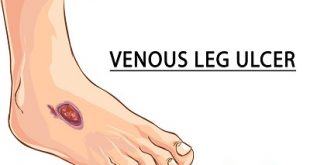Definition
Vasovagal syncope is a condition that leads to fainting in some people. It is also called neurocardiogenic syncope or reflex syncope. It’s the most common cause of fainting. It’s usually not harmful nor a sign of a more serious problem.
Many nerves connect with your heart and blood vessels. These nerves help control the speed and force of your heartbeat. They also regulate blood pressure by controlling whether your blood vessels widen or tighten. Usually, these nerves coordinate their actions so you always get enough blood to your brain. Under certain situations, these nerves might give an inappropriate signal. This might cause your blood vessels to open wide. At the same time, your heartbeat may slow down. Blood can pool in your legs which leads to a drop in blood pressure, and not enough of it may reach the brain. If that happens, you may briefly lose consciousness. When you lie or fall down, blood flow to the brain resumes.
Vasovagal syncope is quite common. It most often affects children and young adults, but it can happen at any age. It happens to men and women in about equal numbers. Unlike some other causes of fainting, vasovagal syncope does not signal an underlying problem with the heart or brain.
Prevalence of Vasovagal syncope
The prevalence of syncope differs based on the clinical setting and the age of the patient. It is estimated that 3% of men and 3.5% of women experience syncope during their lifetime. Syncope has been estimated to account for 1% to 3% of emergency department visits and 1% to 6% of hospital admissions. The prevalence of syncope increases with age and is estimated to be 0.7% in patients age 35 to 44 compared with 4% to 6% in patients 75 and older. In the Framingham study, the incidence of syncope increased after the age of 70, from 5.7 per 1,000 events person-years in men aged 60 to 69 to 11.1 per 1,000 events person-years in men 70 to 79.
Vasovagal syncope risk factors
Though neurocardiogenic syncope is very common and many people have one or more episodes in their lifetimes with no identifiable cause some risk factors that could contribute to neurocardiogenic syncope include:
Alcohol or (prescription or illegal) drug use: In some cases, alcohol or drugs can precipitate a fainting episode, especially if they cause dehydration, low blood sugar or low blood pressure.
Anxiety or panic disorders: Because syncope can be triggered by intense emotional stress, the heightened levels associated with these conditions could increase the risk of neurocardiogenic syncope.
Diabetes: Episodes of low blood sugar typically from skipping meals can bring on neurocardiogenic syncope. People with diabetes may experience these low blood sugar episodes more frequently, even when they eat regular meals.
Illnesses that affect your autonomic nervous system, such as Parkinson’s disease: Orthostatic hypotension, a sharp drop in blood pressure that happens when a person gets up from a bed or chair, can cause dizziness or fainting. This symptom is common in Parkinson’s and some other conditions.
Causes of Vasovagal syncope
Many triggers can cause vasovagal syncope, such as:
- Standing for long periods
- Too much heat
- Intense emotion, such as fear
- Intense pain
- The sight of blood or a needle
- Exercising for a long time
Older adults may have additional triggers, such as:
- Urinating
- Swallowing
- Coughing
- Having a bowel movement
Symptoms
Before a person faints, there are a number of warning signs. These are known as prodromal symptoms, and they usually occur within a few minutes of loss of consciousness. These include:
- Blurry vision
- Cold, clammy sweat
- Feeling of warmth
- Lightheadedness
- Narrowing vision, or tunnel vision
- Nausea
- Pale skin
- Uncontrollable yawning
If you notice any of these symptoms, you may have time to take steps to prevent injury, such as sitting down or moving away from furniture that could cause injury when you fall.
People who faint usually regain consciousness within a few seconds, since lying down improves blood pressure almost immediately. However, they should not stand up too soon since being active can lead to another episode.
Complications of Vasovagal syncope
- Vasovagal syncope itself is generally not dangerous. Of course, fainting can be dangerous if it happens at certain times, like while driving.
- Most people with rare episodes of vasovagal syncope can drive safely. If you have chronic syncope that is not under control, your doctor may advise against driving.
- This is especially likely if you don’t usually have warning signs before you faint. Ask your doctor about what is safe for you to do.
Diagnosis and test
Diagnosing vasovagal syncope often begins with a physical examination. During the physical exam, your doctor will listen to your heart and take your blood pressure. He or she may also massage the main arteries in your neck to see if that causes you to feel faint.
Your doctor may also recommend several tests to rule out other possible causes of your fainting particularly heart-related problems. These tests may include:
Electrocardiogram: This test records the electrical signals your heart produces. It can detect irregular heart rhythms and other cardiac problems. You may need to wear a portable monitor for at least a day or as long as a month.
Echocardiogram: This test uses ultrasound imaging to view the heart and look for conditions, such as valve problems, that can cause fainting.
Exercise stress test: This test studies heart rhythms during exercise. It’s usually conducted while you walk or jog on a treadmill.
Blood tests: Your doctor may look for conditions, such as anemia, that can cause or contribute to fainting spells.
Tilt table test. If no heart problems appear to cause your fainting, your doctor may suggest that you undergo a tilt table test. During the test, you lie flat on your back on a table that changes positions, tilting you upward at various angles. A technician monitors your heart rhythms and blood pressure during the test to see if changing your posture affects them.
Treatment and medications
In most cases of vasovagal syncope, treatment is unnecessary. Your doctor may help you identify your fainting triggers and discuss ways you might avoid them.
However, if you experience vasovagal syncope often enough to interfere with your quality of life, your doctor may suggest trying one or more of the following remedies:
Medications: A drug called fludrocortisone acetate that’s normally used to treat low blood pressure may be helpful in preventing vasovagal syncope.
In some people, vasovagal syncope occurs with disturbing frequency even when all appropriate precautions are taken. For these individuals, drug therapy is often helpful.
Drugs that have been shown to be of some help include:
- Midodrine, a vasoconstricting drug that dilates blood vessels
- Norpace (disopyramide), an antiarrhythmic drug
- Serotonin re-uptake inhibitors
- Theophylline, typically used to treat asthma
While one or more of these drugs will often help reduce episodes of syncope, finding the “right” combination of drugs is usually a matter of trial and error. Patience is required on the part of both the doctor and patient in order to find the best therapy.
Therapies: Your doctor may recommend ways to decrease the pooling of blood in your legs. These may include foot exercises, wearing compression stockings or tensing your leg muscles when standing. You may need to increase salt in your diet if you don’t usually have high blood pressure. Avoid prolonged standing especially in hot, crowded places and drink plenty of fluids.
Surgery: Very rarely, inserting an electrical pacemaker to regulate the heartbeat may help some people with vasovagal syncope who haven’t been helped by other treatments.
Prevention of Vasovagal syncope
It may not be possible to completely prevent vasovagal syncope, but you may be able to cut down on how often you faint.
- The most important step is to try and determine your triggers.
- Do you tend to faint when you have your blood drawn, or when you watch scary movies? Or have you noticed that you feel faint when you’re overly anxious, or have been standing for a long time?
- If you’re able to find a pattern, try to take steps to avoid or work around your triggers.
- When you start to feel faint, immediately lie down or sit in a safe spot if you can. It could help you avoid fainting, or at least prevent injury due to a fall.
 Diseases Treatments Dictionary This is complete solution to read all diseases treatments Which covers Prevention, Causes, Symptoms, Medical Terms, Drugs, Prescription, Natural Remedies with cures and Treatments. Most of the common diseases were listed in names, split with categories.
Diseases Treatments Dictionary This is complete solution to read all diseases treatments Which covers Prevention, Causes, Symptoms, Medical Terms, Drugs, Prescription, Natural Remedies with cures and Treatments. Most of the common diseases were listed in names, split with categories.








Iam currently on my 4th pacemaker and totally dependent on the dam thing. I would like to be able to talk to other individuals who have a same condition. Thank you Sharlett.
I feel that currently i got this kind of illness. I might be wrong i m not sure…
my symptoms was – headaches only back of head/can’t sleep at night normally falling in sleep at 3 or 4 am. get up at 7or 8 am and went for work, even not sleepy at whole day at work. no any other complaints. now day start taking ( Hydroxyzine 25 mg) Tablet
please ”’ may i have some suggestions please